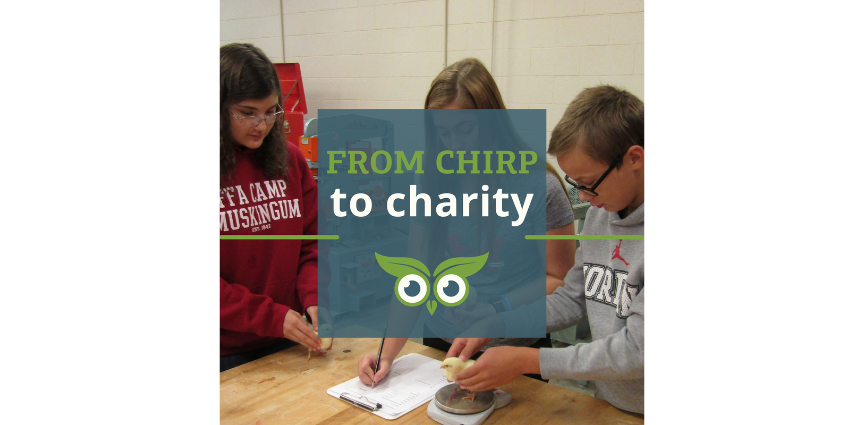
So you’re in the midst of ANIMAL NUTRITION…
You’ve taught the nutrient categories.
You’ve taught how to read a feed label.
You’ve taught Pearson’s Square…and even made it more engaging by using trail mix to have students use Pearson’s Square to create their own “ration”.
But how do you make animal nutrition more EXCITING?
These were all the things going through my head my first year of teaching…that is until I brought in the birds!
For seven years, I conducted chicken feed trials to drastically increase engagement in my animal nutrition. Groups of students were each assigned four chickens and a poultry feed, and tracked their growth patterns over a four week time period to determine the feed that ultimately produced the fastest growing chicken.
I bought stackable rabbits cages from KW Cages to house the chickens. This would allow my students to keep the different groups of chickens separate so they could track their growth patterns based on the feed they were given. It also didn’t take up much space and was easy to clean and store after the trials were completed. It also allowed me to store the chickens outside over the weekend so a student volunteer could come and tend to the chickens…this was a win-win because I didn’t have to give up my weekend and the student had a SAE!
I bought plastic feeders and waterers from TSC and worked with my local grain elevator to order 40 chickens and nine different feeds, ranging in protein levels.
Approximately a week after the chicks arrived, students would select the four chicks for their test group and would be provided a feed to give their chicks throughout the trials. Students would weigh their feed once a day and would record this data in their logbook. The next day they would weigh how much feed was remaining so they could determine how much feed their chickens were actually consuming.
Twice per week students would weigh their chickens and would complete qualitative observations on their chickens. Students would clean the chicken pens twice per week as well to control the flies in the shop. After four weeks of trials, students would calculate their rate of gain and feed efficiency to determine which feed allowed the chickens to grow the fastest.
The chickens were transported to a students’ house to be fed out until they were processed at eight weeks (another SAE opportunity). My students always decided to donate the chicken to the local homeless shelter where students would volunteer to serve the chicken they raised as part of their Chickens for Charity Service Project…a project they included in their National Chapter Application and helped acquire two National Models of Excellence finalists and one National Models of Innovation Finalist.
For me, this was the perfect project to integrate into my animal nutrition course to increase engagement because students could visually see how protein levels affect animal growth…plus it allowed students to engage in community service and support their local community!
Find all of my resources to start this project with your own students here.
